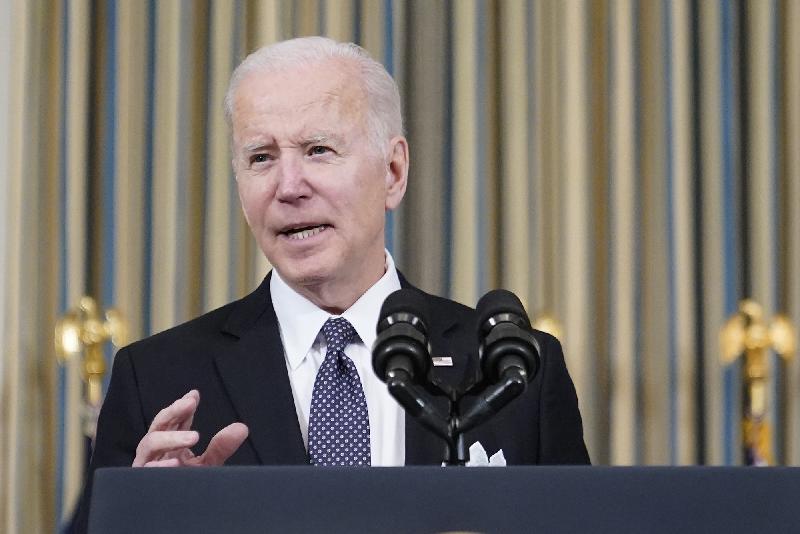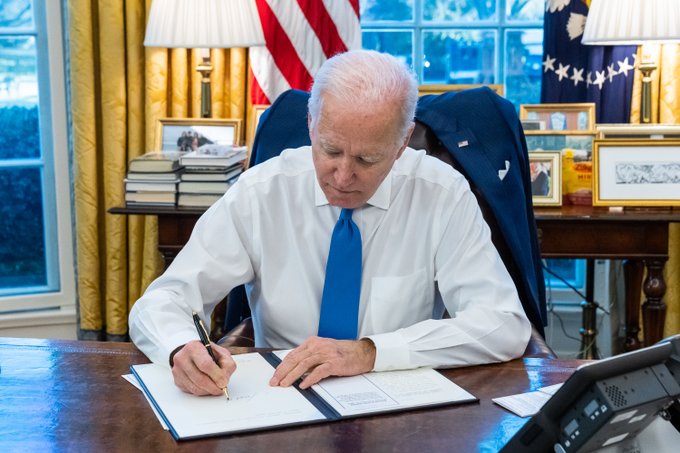
*Today, the Biden-Harris administration announced that 43 million federal student loan borrowers will receive forgiveness ranging between $10,000 and $20,000.
95% of federal loan borrowers will receive at least $10,000 in debt relief, with borrowers who received pell grants while in college receiving $20,000 in forgiveness. Given that 72% of Black students are pell grant recipients, the Black community stands to benefit disproportionately.
Based on the amounts announced, 20 million borrowers are eligible to have their debt completely canceled. Additional reforms were announced to make student loan payments more affordable and student loan forgiveness programs more attainable.
While much of the discussion on student loan debt has been centered around those who owe exorbitant amounts, the magnitude of the people helped by this student debt cancelation is the bigger story.
READ MORE: President Biden Intends to Cancel $10,000 in Student Loan Debt

What you need to know:
- Borrowers earning up $125,000 or $250,000 for households (based on their 2020 or 2021 income tax returns) qualify for $10,000 in student debt forgiveness.
- Borrowers who received pell grants while in college qualify for $20,000 in student debt forgiveness using the same $125,000 individual/$250,000 household current income thresholds.
- Income-driven repayment plans authorized by the Department of Education will start to cap monthly payments at 5% instead of 10% and forgive balances under $12,000 after 10 years instead of 20 years.
The notion that the $10,000 and $20,000 cancelation is a drop in the bucket or doesn’t put a dent in the balances for most borrowers is objectively and quantitatively false. A majority of federal debt borrowers, 53%, have less than $20,000 remaining on their loans, with 33% of borrowers owing less than $10,000. Borrowers with $100,000 or more in student debt are often discussed, yet they make up 7% of borrowers, with another 18% owing between $40,000 to $100,0000.
In recent years the student debt discussion has rightfully turned to the disparities in Black student debt compared to other races, with the cancel student debt movement increasingly invoking these disparities as a racial justice issue. The plan announced by the administration cuts right at the heart of the disparity in a clever way that insulates the administration from court challenges like the ones that blocked Black farmer debt relief. Students who received pell grants will be eligible for $20,000 in student debt forgiveness, double the $10,000 amount for other borrowers.
It is also worth noting that the additional relief for pell grant recipients proposal has Vice President Kamala Harris’ fingerprints all over it. As a presidential candidate, Harris proposed using pell grant eligibility as a way to target support for Black entrepreneurs and get around federal regulations that require race-neutral policies.
Over 70% of Black students receive pell grants as opposed to just 34% of White students, so the additional $10,000 immediately narrows the racial wealth gap. Considering that about one in four Black Americans has a negative net worth with their total debt exceeding their total assets, over half a million Black Americans would see their net worth move from negative to positive from the first $10,000 of this student debt relief.
The average student loan debt of Black borrowers is $52,000, with 45% of that debt originating from graduate school student loans. However, among Black families, only 30% hold student debt with a median balance of $30,000. Black men have an even lower median student loan balance of $22,000, while Black women hold a median balance of $30,000. By any metric, the most conservative estimates show that the average Black borrower will see their balance cut nearly in half, while more than a quarter of Black borrowers will see their balance completely wiped out.
While not everyone will be satisfied with the student loan amounts forgiven, from people who never had or paid off student debt to those with substantial remaining balances, the administration also announced major relief for those saddled with unaffordable student loan payments. A common critique of targeted student debt relief is that borrowers would quickly accrue interest exceeding the amount forgiven, but that is not true under announced reforms. The income-driven repayment program is being overhauled by the Biden-Harris Department of Education in several significant ways.
For starters, the Department of Education’s income-driven repayment program will now cap the monthly payment amounts to 5% of the borrower’s discretionary income (down from the previous 10% cap) while simultaneously increasing the amount of earnings that are considered non-discretionary income. As a result of the higher non-discretionary income cap, borrowers earning under 225% of the federal poverty level, which works out to a $15 hourly wage, will have a $0 monthly payment. Nearly half of Black workers in this country make less than a $15 hourly wage. However, the higher non-discretionary income threshold benefits those who make above the 225% poverty threshold as well, saving many borrowers over $1,000 annually.
Black students are twice as likely to use income-driven repayment plans, so the reforms announced again disproportionately benefit Black borrowers. Importantly the administration’s proposal will not just lower the monthly payments to make them more manageable, it will stop borrowers from seeing their balances balloon even while they continue to make payments.
Studies have shown that nearly half of Black students have a higher student loan balance four years after graduation due to accrued interest. Under the new Biden-Harris Education department income-driven repayment plan, the unpaid monthly interest is covered. As a result, any borrower who makes their monthly payments, including borrowers who qualify for a $0 payment based on income, will not see their loan balance grow. This will end the vicious cycle for federal student debt borrowers, disproportionately Black borrowers, who find themselves in a deeper hole with each passing year.
Changes were also announced to various loan forgiveness programs. The loan forgiveness window for borrowers with original loan balances of $12,000 or less will be cut in half from 20 years down to 10 years. This change means nearly all community college borrowers to be debt-free within ten years, important given that Black students enroll in community college at higher rates.
Borrowers have until October 31, 2022, to apply for and take advantage of the temporary changes to the Public Service Loan Forgiveness (PSLF) program that make it easier to qualify even if one had been told in the past that they are not eligible. Under the new proposed changes, more payments now qualify, such as partial, lump sum, and late payments, and certain kinds of deferments and forbearance.
One abundantly clear thing is that despite many of the narratives inaccurately suggesting the impact of the administration’s decision to cancel some student debt is small or negligible, the policy was crafted to ensure that Black borrowers can reap disproportionately more benefits and narrow the wealth gap.
The federal student loan pause will be extended through December 31, 2022, for the final time to allow for borrowers to make arrangements to resume payments and process their student debt cancelation.
For borrowers with income information already on file with the Department of Education, the student debt cancelation will likely be automatic. Otherwise, borrowers will need to apply for debt relief. Federal student loans that were taken out before July 1, 2022, are eligible for cancelation subject to income guidelines. For more information, visit studentaid.gov
We Publish News 24/7. Don’t Miss A Story. Click HERE to SUBSCRIBE to Our Newsletter Now!





